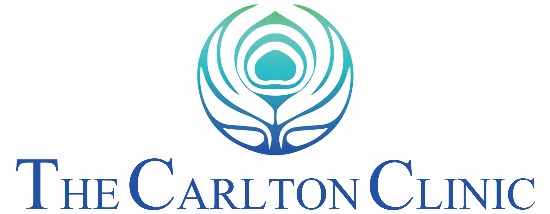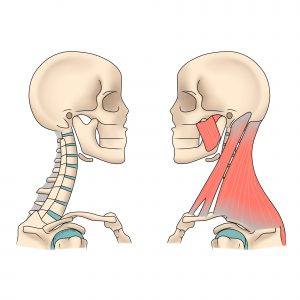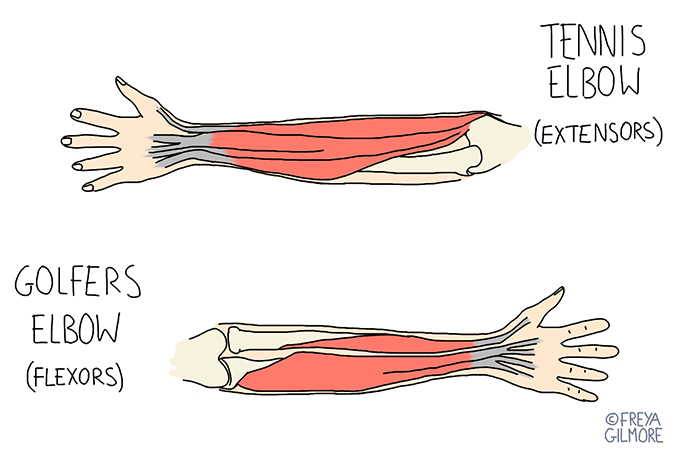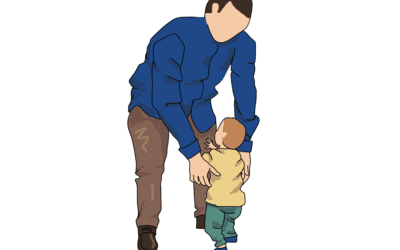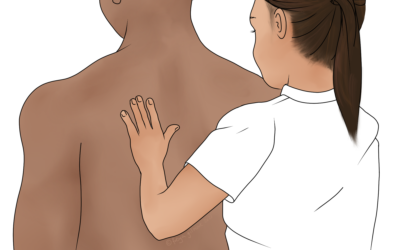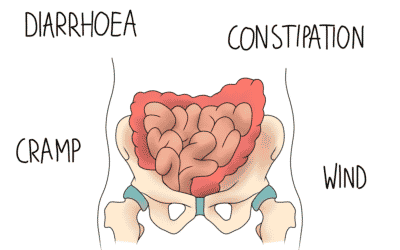Golfer’s and Tennis Elbow are both forms of epicondylitis: inflammation in the elbow where the muscle meets bone. They often begin as a simple muscle strain, but without management they can become a lot more painful and debilitating.
Epicondylitis vs Pulled Muscles
There is a little bit of inflammation with any pulled muscle, but this is much more significant with epicondylitis. The four signs of inflammation are:
- redness
- heat
- pain
- swelling
With a pulled muscle you might notice some of these symptoms, but find that they resolve quickly on their own or with a cool compress. They are a lot more persistent in epicondylitis. They may also come with weakness in the forearm and wrist.
Often, but not always, epicondylitis will develop after a pulled or strained muscle. There may not be a sudden change in symptoms, but if your strain takes longer than you would expect to clear, it is time to investigate.
Golfer’s and Tennis Elbow
Although the pain affects the elbow, it is muscles that act on the wrist that are involved. Tennis elbow affects the wrist extensors (muscles that bend your wrist back, as would be involved in a tennis backhand). Golfer’s elbow affects the flexors. Of course, you don’t need to have played tennis or golf to develop either condition. New activities can bring it on, or even repeated everyday movements. For example, carrying heavy shopping a long way might require a fixed wrist position in either direction. This could be the start of a strain.
Preventing Golfer’s and Tennis Elbow
Avoiding strains in the first place would be ideal, but knowing how to manage them when they do happen is important too.
Tennis elbow can be related to playing racket sports with a particularly thin handle. Using grip tape to bulk out the handle takes some of the strain off the muscles, so may help prevent epicondylitis.
Some risk factors are not avoidable, such as if your work requires strong, repetitive movements. Your osteopath may still be able to provide you with some exercises to help manage the load.
Diagnosis and Management
There are some quick tests your osteopath can do to work out whether you have a simple strain or a case of epicondylitis. You do not need a GP’s referral to see an osteopath as we are primary care practitioners. Some other elbow problems may initially present as tennis elbow- we are qualified to give you a diagnosis.
Osteopaths combine treatment in the clinic with work for you to do at home. Treatment may include local work to the muscles and joints, as well as looking at the shoulder, wrist, or further afield to find any other dysfunction that may have contributed. Advice might involve exercises to strengthen or loosen muscles, heat or ice, and lifestyle advice to avoid further irritation.
However severe your elbow pain is, nip it in the bud and book an appointment now.
